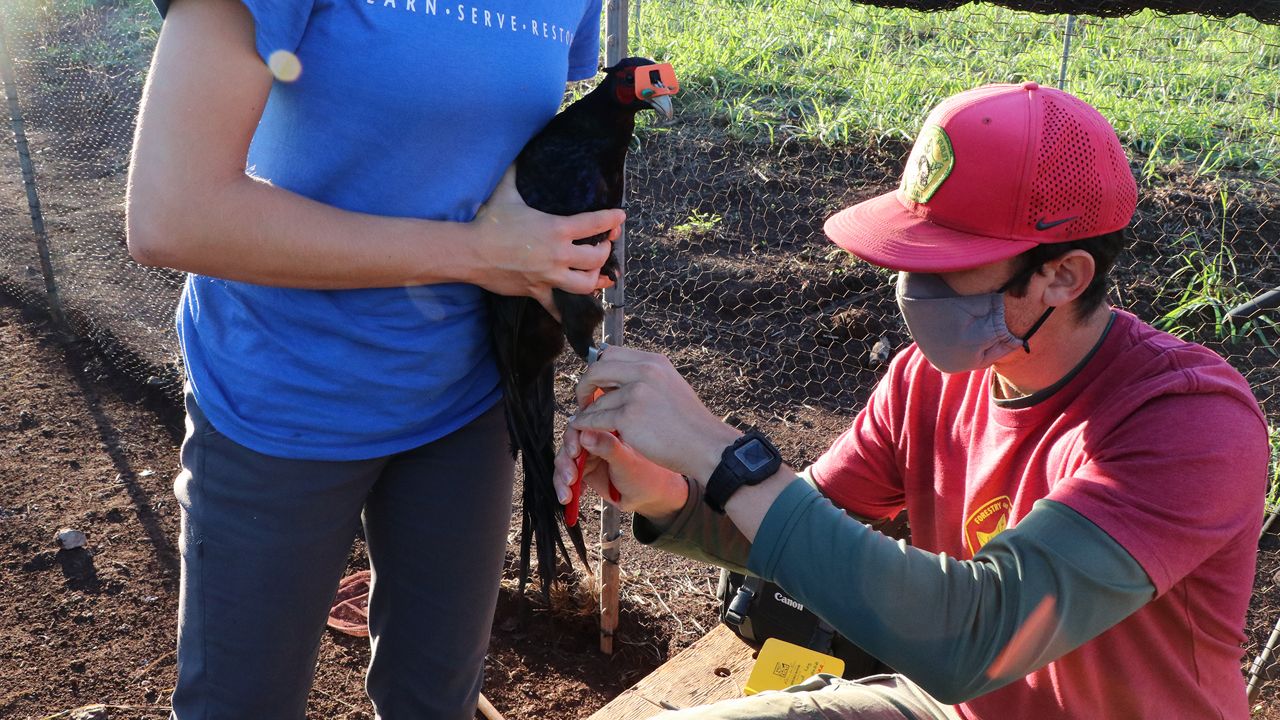OAHU — Hunting your own game bird is a rarity for most residents, but for island hunters, it’s a special occasion, especially during the holidays.
The DLNR Division of Forestry and Wildlife is making it easier for them to do just that on Oahu and Kauai. It’s called the Put-and-Take Program, according to a DLNR release.
“All the money from hunting licenses and the bird stamps goes directly to this game bird rearing program,” said Nick Vargas, a wildlife biologist with DOFAW. “We use those funds to be able to use this ‘put-and-take’ system where we can raise the birds until they’re fully mature and healthy. (Then) we put them out for the hunters to be able to hunt."
Since 2017, DOFAW has flown hundreds of birds — a mix of melanistic mutant pheasants, ring-neck pheasants and chukar partridges — nearly 4,100 miles from Wisconsin to brooding and rearing facilities in Hawaii. After about six weeks, they’re moved to fly pens, where they spend another 10 weeks until they reach maturity. Then, just in time for hunting season, the birds are trucked to state Game Management Areas and released.
According to Vargas, the state has two separate fly pens, one of which is run by a volunteer hunting group. The other one is run by DOFAW staff.
“It takes a lot of time, a lot of energy, a lot of volunteer effort and a lot of staff effort to continuously feed them, water them and make sure they’re healthy and strong for the beginning of the hunting season,” he said. According to Vargas, what they’re doing is similar to stocking a lake with fish.
This past Wednesday, Vargas, a team of DOFAW staff and KUPU interns netted 20 pheasants, placed metal leg bands on them, then trucked them to two locations in the Kuaokala Game Management Area. This was the fourth release this month; nine more will take place from now to the end of January 2022, which marks the end of the small game hunting season.
Kauai also has a put-and-take program with even more birds than Oahu passing through the program annually. They’re released into the Kekaha Game Management Area, Unit A.
“Hunters are a huge value to our state-managed systems,” said Vargas. “They utilize the resources sustainably and they are often the first to report habitat changes and problems on the landscape, which help us to upgrade or change management practices.”
He said the hunters are the first line of defense because they’re out observing and experiencing the area’s natural conditions and are among the volunteers who devote time to raising the birds.
When it comes to putting birds on the table, Vargas said, “I’m planning on coming, possibly getting a chukar sometime during the season. (They’re) all good eating birds. We’ve been getting a lot of good reviews from the hunters that the birds are pretty full, pretty healthy.”





